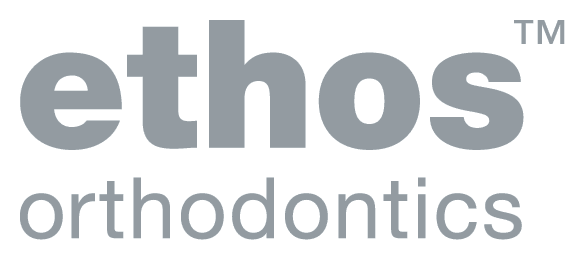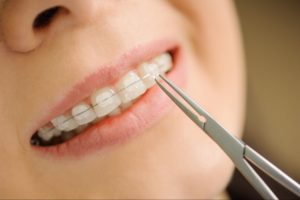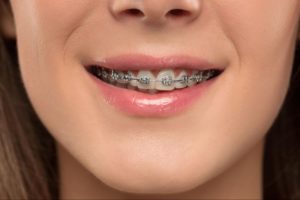If you’re about to start your orthodontic journey, it is important to understand the different types of braces available to you and how their treatment plans differ. With so many options, we’ve narrowed down the most popular forms of braces to help you make your decision easier.
What Types of Braces Can I Choose From?
There are multiple different types of braces available for you and it can be difficult to understand the pros and cons of each. Ethos is here to help take you through what the different types are, how they work and which could be right for you.
Ceramic Braces
Ceramic braces, also known as clear or clarity braces, are clear or tooth-coloured ceramic brackets attached to the surface of your teeth. Any wires and rubber bands used can also be matched to your tooth colour to make them less noticeable. This is a great option for anyone who doesn’t want braces to be too visible.
These types of braces are very durable. Ceramic braces can be slightly more expensive than traditional metal braces, however are still a cost-effective way to straighten your teeth compared to other straightening options such as Invisalign, which we discuss below.
Lingual Braces 
Unlike other braces, lingual braces are attached to the back of the patient’s teeth rather than the front. Adults often opt for these types of braces if they don’t want them to be visible when looking at their teeth from the front. Even though they are placed at the back of your teeth, they are still an effective method for straightening your smile.
Lingual braces are quite a bit more expensive than traditional braces and some patients report having a slight lisp when they are first put on. However, they are a great option if you want a more discreet straightening treatment.
Metal Braces 
Metal braces are the most common types of braces. They are metal brackets that are fixed to the front your teeth, allowing for greater control and precise movement throughout your orthodontic treatment. These braces are highly durable and less likely to be discoloured compared to clear, ceramic braces. Metal braces also give patients the capability to choose different coloured brackets or rubber bands to customise their smile!
Invisalign 
Invisalign is a great way to get your teeth straight without people noticing. Invisalign is made by having a 3D scan of your mouth using a special camera. Your orthodontist will then find the ideal position for your teeth virtually and have Invisalign make all your aligners – each new aligner being slightly different from the previous one – to slowly reposition and correct crooked teeth. Invisalign is generally more comfortable than braces but there is still some discomfort in the first few days after starting treatment.
Treatment with Invisalign can often be faster than traditional braces and usually requires fewer trips to the orthodontist. However, because there is a laboratory fee to manufacture the aligners, this option can be a little more expensive than braces.
How Long Will My Treatment Take?
The length of your orthodontic treatment will depend on how crooked your teeth are to start with. Your orthodontist will guide you as to the best technique to use and will balance treatment efficiency with cost and your personal wishes.
Do you have more questions?
Still not sure which braces option best suits you? Our Ethos team is here to help you with any questions you have throughout your orthodontic journey. If you have any other enquiries about dental treatments and braces types, don’t hesitate to reach out to our team.








